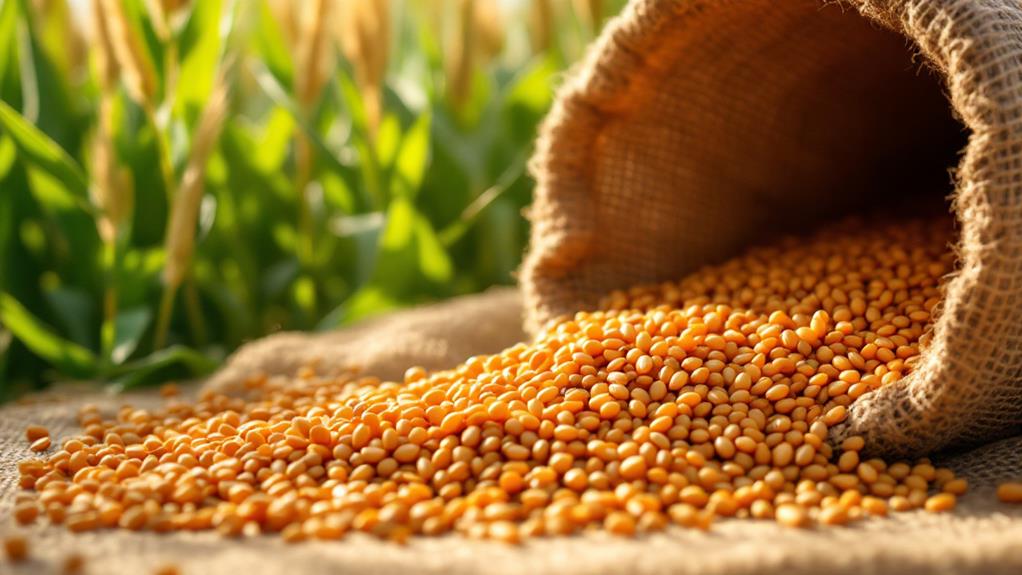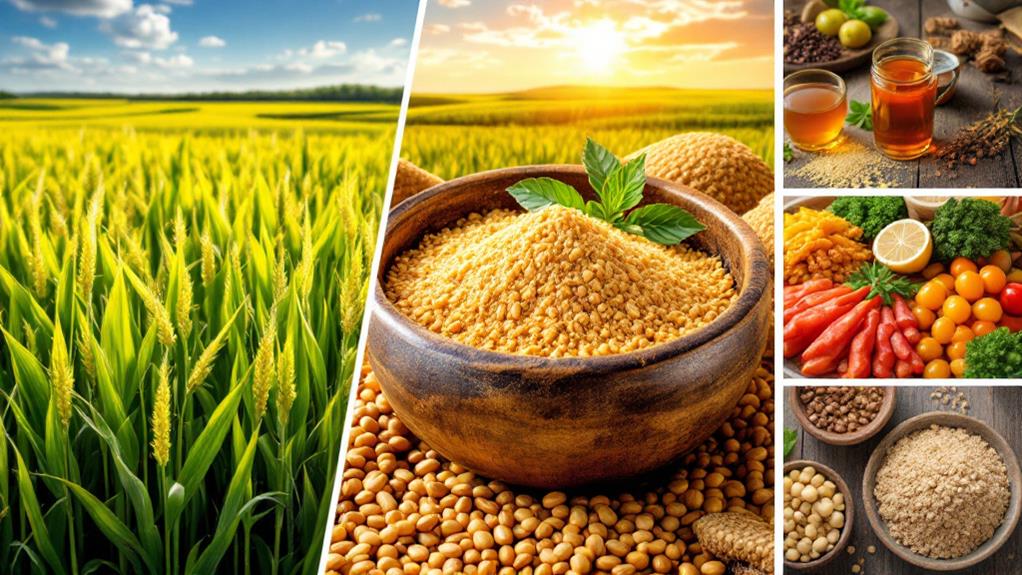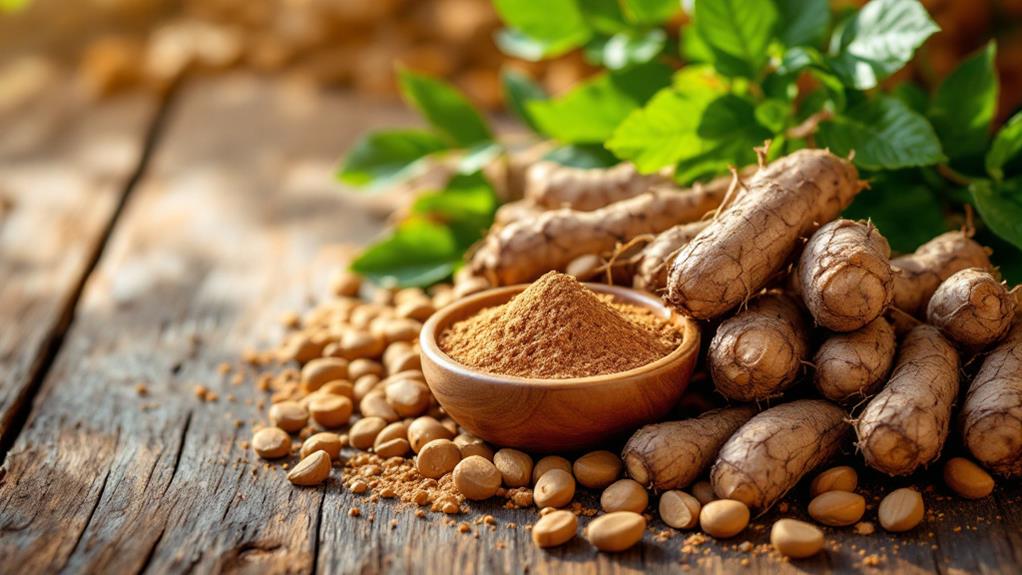What Is Sorghum? Everything You Need to Know About This Ancient Grain

Sorghum is an ancient grain originating from northeastern Africa around 8000 B.C. It's incredibly resilient, thriving in multiple climates, and is a gluten-free, fiber-rich crop. You'll find it vital for livestock feed and ethanol production. It's also gaining popularity in your kitchen as a adaptable ingredient, substituting rice or quinoa. Sorghum offers impressive nutritional benefits, including fiber, protein, and important minerals to aid in digestion and blood sugar management. As a gluten-free alternative, it caters to numerous dietary needs. There's so much more about this powerhouse grain that you'll find fascinating.
Understanding Sorghum
Sorghum might be an ancient grain, but it's making waves in contemporary agriculture thanks to its resilience and versatility. Originating from northeastern Africa, sorghum has been cultivated since 8000 B.C., proving its longstanding value. You'll find this gluten-free grain is not only drought-tolerant but also a powerhouse of health benefits. Thanks to its high fiber content, sorghum can support blood sugar management and improve gut health, making it a smart choice for health-conscious consumers.
In the United States, sorghum's role extends beyond just a nutritious option for humans. It plays a significant part in livestock feed, providing a reliable source of nutrition for animals. Furthermore, its use in ethanol production highlights its versatility, offering a renewable energy source that supports sustainability efforts. The grain's adaptability to different climates makes it an excellent crop for resource-conscious farmers, further enhancing its global importance.
In addition, sorghum is steadily gaining traction in consumer food products like cereals and snacks. Its ability to blend into various recipes without gluten makes it increasingly popular among those with dietary restrictions. By understanding sorghum's multifaceted applications, you can appreciate its growing prominence in the current agricultural landscape.
Sorghum's Historical Journey
While you might be familiar with sorghum's modern applications, its roots stretch back to ancient times, showcasing a remarkable historical expedition. Sorghum originated in northeastern Africa, with its earliest records dating to 8,000 B.C., marking it as one of the oldest cultivated grains. This ancient grain didn't remain confined to its place of origin; instead, it adapted and spread across Africa. Tribal groups played a crucial role in this expedition, leading to the development of five distinct sorghum races, each distinctly influenced by their movements and environments.
The expedition didn't stop in Africa. Sorghum's adaptability allowed it to thrive in India, China, and Australia, highlighting its global importance. The grain's ability to fit into different agricultural practices guaranteed its continued prominence worldwide. In the United States, sorghum's story began with Benjamin Franklin, who in 1757, documented its use for broom production. This marked the beginning of its American chapter.
Today, sorghum is an essential crop in the U.S., especially in the Sorghum Belt, stretching from South Dakota to South Texas. Its historical expedition underlines an enduring legacy, rooted in adaptability and global importance.
Sorghum Uses and Applications

As you investigate the versatile world of sorghum, you'll uncover its significant impact across different industries. The sorghum grain is primarily used for livestock feed, supporting the poultry, beef, and pork industries in the U.S. About 70% of its production is dedicated to animal consumption. But that's not all—sorghum's utility extends far beyond feeding animals.
- Ethanol Production: One-third of U.S. sorghum crops are utilized for ethanol, a renewable fuel source that requires 30% less water than other feedstocks.
- Consumer Food Industries: Sorghum products are making waves in the market, especially for those seeking gluten-free options. You'll find it in cereals, snacks, and baked goods, with over 1,400 products available.
- Cooking Flexibility: Sorghum can be prepared in a slow cooker, stovetop, or rice cooker, and it serves as a great substitute for rice or quinoa.
- Building Materials and More: Beyond food, sorghum is used in building materials, pet food, and eco-friendly products like brooms, showcasing its diverse applications.
Whether you're exploring sorghum for its plant-based protein or finding creative ways to use it, this ancient grain offers a wealth of possibilities.
Nutritional Profile of Sorghum
Exploring sorghum's diverse applications naturally leads to its impressive nutritional advantages. Sorghum boasts a robust nutritional profile, making it a valuable enhancement to your diet. Packed with dietary fiber, it offers around 8 grams per 1/4-cup serving, promoting digestive health and keeping you full longer. Its protein content is similarly commendable, providing about 5 grams per serving, which supports muscle maintenance and growth.
Incorporating sorghum into your meals guarantees you receive vital minerals like iron, magnesium, and phosphorus. These nutrients play a significant role in maintaining your energy levels, bone strength, and general health. Sorghum's antioxidant properties, especially its phenolic compounds, help combat oxidative stress and protect your cells from damage.
One of the standout features of sorghum is its low glycemic index, which aids in managing blood sugar levels. This makes it an ideal choice if you're mindful of diabetes or simply looking to maintain steady energy throughout the day. As a whole grain, sorghum retains most of its nutrients, and since it's gluten-free, it serves as a nutritious alternative for those with gluten sensitivities, enhancing your baking endeavors while supporting your health.
Cooking With Sorghum

Cooking with sorghum opens up a world of culinary possibilities that can improve both flavor and nutrition in your meals. This ancient grain is incredibly versatile, suitable for a variety of dishes. When cooking sorghum grains, you'll find they take a bit longer compared to rice. Use a ratio of 1 cup of sorghum to 3 cups of water, bring it to a boil, and then let it simmer for about 50-60 minutes until tender. Soaking overnight can cut down the boiling time.
For those who enjoy snacking, try popped sorghum. It offers a delightful, popcorn-like treat that can be seasoned to your liking. Sorghum flour serves as a fantastic gluten-free option in baking. Substitute 10-20% of wheat flour with sorghum flour to maintain texture and moisture. Improve your dishes by using stock or broth instead of water while boiling sorghum. This simple swap can greatly increase the flavor of your pilafs and casseroles.
Here's a quick guide to using sorghum:
- Cooked Grains: Boil and simmer.
- Popped Sorghum: Snack or topping.
- Sorghum Flour: Gluten-free baking.
- Flavor Enhancement: Use broth instead of water.




